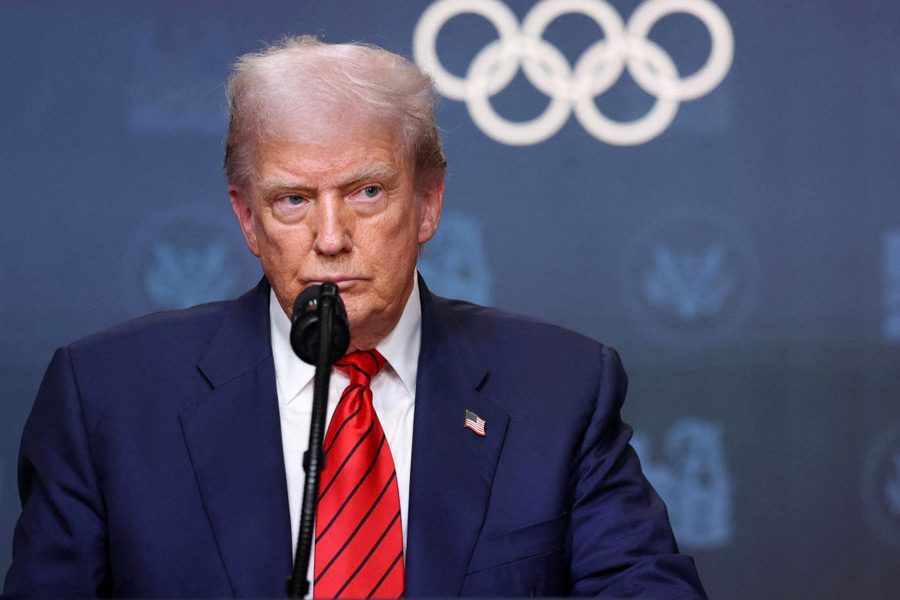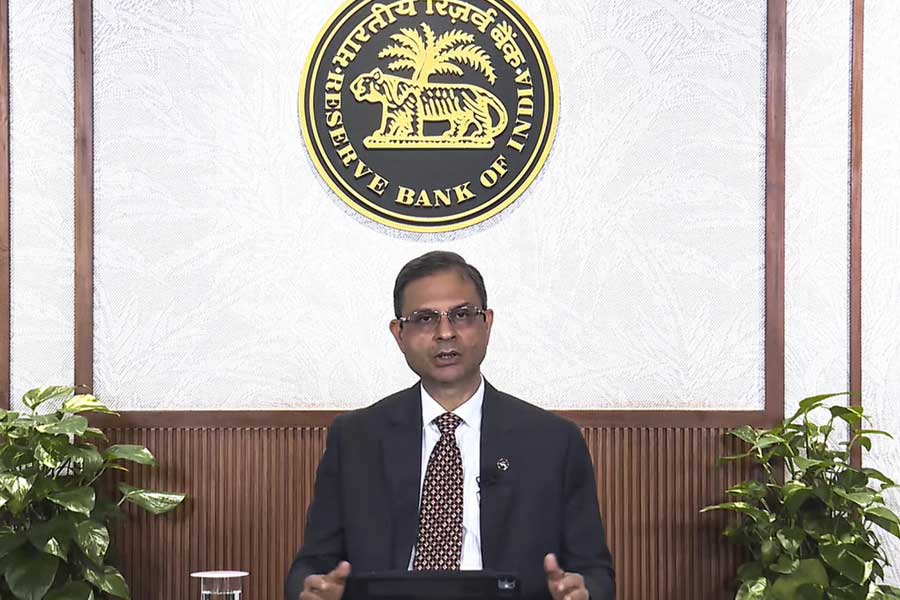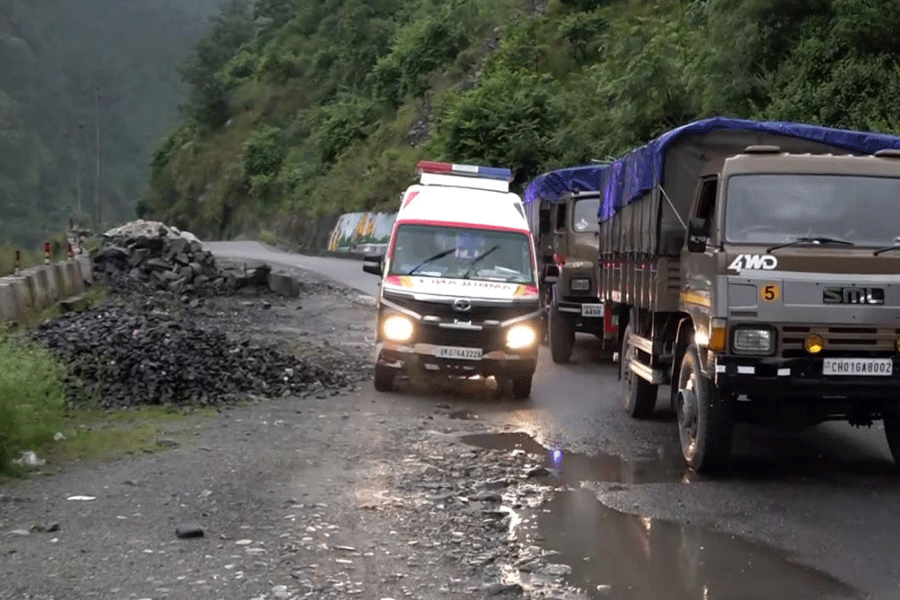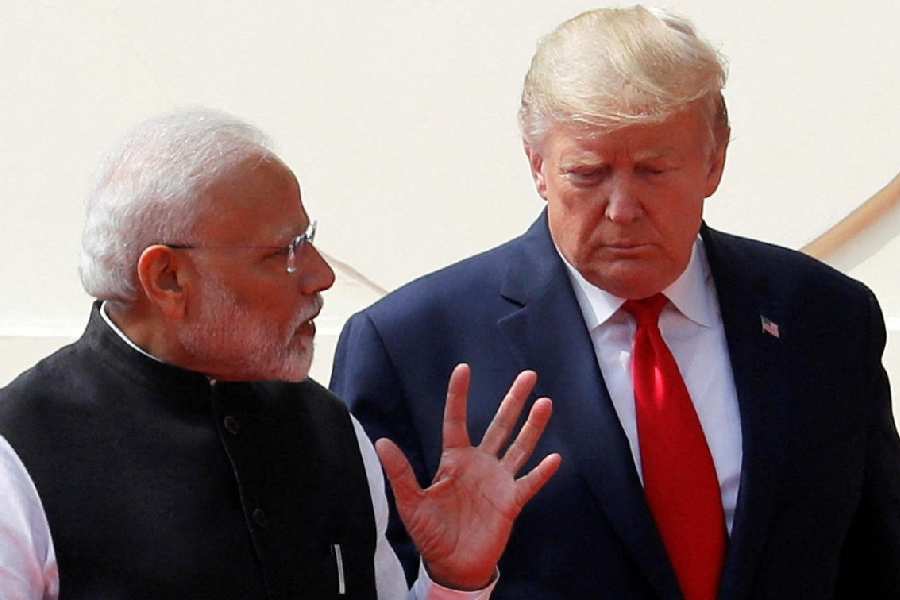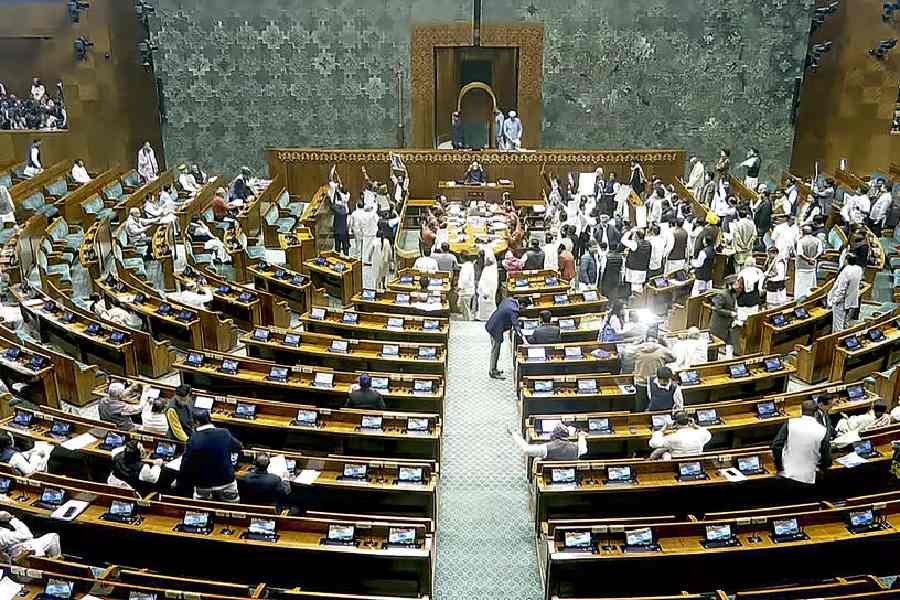|
|
| Handle with care |
Boredom with established truths is the enemy of mankind, said Bernard Crick. Perhaps, one might also add, ‘dangerous’ for nations and their destiny. The prime minister, Manmohan Singh, has constantly welcomed “new ideas” and initiatives to think “out of the box” for a resolution of the Jammu and Kashmir tangle. Does this represent tiredness on his part with the established Indian positions on the issue?
If it does, it might be worth holding consultations across the political spectrum on the ideas that have been exchanged with Islamabad through the process of “back channel” diplomacy. One must be fully aware of General Pervez Musharraf’s broad objectives in Kashmir and they must be debated publicly.
Musharraf wants a toehold in Jammu and Kashmir. For this, India needs to admit that this state does not belong to it. India must also accept that Pakistan and the Kashmiris are parties to deciding Jammu and Kashmir’s ultimate status. This the general can get only if he can persuade India to somehow resile from its juridical position on Kashmir. This is his main thrust.
When Musharraf says that he is willing to give up Pakistan’s “claim” and move away from UN resolutions, he is suggesting that somehow the United Nations must legitimize Islamabad’s claim. He also sets up an expectation that India will similarly give up its claim. However, the UN resolutions in no way lend credibility to Pakistan’s claim — Islamabad was to withdraw its forces from the Kashmiri territory under its illegal control and then a plebiscite was to be held. Pakistan is, therefore, not giving up its claim simply because there is no legal claim to give up.
By offering to set up other such mutually observed concessions Musharraf is forcing an agenda onto India, which would shift the well-anchored Indian position that Jammu and Kashmir is its integral part and that it has complete sovereignty over it. In various ways, it would mean conceding that the Instrument of Accession was neither final nor legally sound.
Those aware of the “back channel” exchanges claim that the process hovers around Musharraf’s proposal of joint supervision, self-governance, demilitarization and porous borders.
The attempt at doing something jointly with Pakistan in Jammu and Kashmir is perceived by India as a consultative and advisory mechanism involving Kashmiris from the two sides (hence the Indian use of the term “joint consultative mechanism”). Pakistan, however, desires the representation of Islamabad and New Delhi in the mechanism; hence its demand, for “joint management” earlier, and, for “joint supervision” now. So while India only wants to involve Kashmiris on issues of common concern, the Pakistani push is for sharing of sovereignty in Kashmir.
There are some in India who think that “joint supervision” may not be a bad idea as this would “extend” India’s sovereignty to the Northern Areas (Gilgit and Baltistan). This is dangerously naïve. Pakistan would not allow an Indian oversight or supervisory role in the Northern Areas as the Karakoram highway passes through it, which gives Pakistan its only border with China. Nor is there real or deep Indian interest in the Northern Areas.
Musharraf essentially seeks to isolate the valley from other regions of the state in India and, in return, he wants India to forget about the Northern Areas on his side of the border. This is evident from his talk of dividing Jammu and Kashmir into seven regions — with joint supervision or management being limited essentially to the valley and Muslim-dominated districts of Jammu on the Indian side and Pakistan-occupied Kashmir (‘Azad Kashmir’).
On the issue of self-governance too there is a mismatch in the position as far as the two sides are concerned. India’s claim is that this already exists in the state but not at comparable levels on the Pakistani side of Kashmir.
As far as demilitarization is concerned, the Indian position is that the army is there because of militancy, which is largely fomented, supported and sustained by Pakistan. New Delhi argues that once that ends — and that point has not yet been reached — the army will be redeployed. If civilian police replaces the army without the ground conditions returning to normal, then the militants and their Pakistani sponsors can have the run of Jammu and Kashmir. The Pakistanis, however, argue that only when demilitarization takes place normalcy will return.
No “concession” must be read in the Pakistani offer to withdraw forces from its side of Kashmir if India does the same. General Musharraf has domestic compulsions to do so. His troubles in Balochistan refuse to come to an end — if anything, the dissent there is spreading. Several divisions of Pakistani troops are deployed in Balochistan and in the federally administered territories bordering Afghanistan. In Waziristan, he has had to swallow military pride and virtually sign an instrument of surrender with taliban to prevent spiralling army casualties — more Pakistani soldiers have died there in last two years than Indian soldiers in Kashmir.
Being a military man, Musharraf has an acute sense of his weakness. He does not want any engagement — defensive or offensive — with Indian troops on the eastern front. The demand for demilitarization of Kashmir, therefore, is a concession that he wants for himself but he made it in the name of the Kashmiris.
Moreover, with the proposed porous borders, there are several security issues. Pakistan can use people-to-people contact, cross-border trade, transport, and so on to create political and economic linkages that will further weaken New Delhi’s ability to control the internal situation in Jammu and Kashmir.
Added to this is the issue of fundamentalist Islamic trends in Pakistan. India has been able to insulate itself from these trends despite a large Muslim population because of restricted contact. A porous border in Kashmir, with no possibility of checking the movement of the so-called Kashmiris from Pakistan to the rest of India, will pose the danger of greater Islamization and radicalization of Indian Muslims.
If, under Pakistani pressure, New Delhi were to move towards greater autonomy short of independence in the state, India’s ability to control the internal processes there would recede even more. It would be difficult to redress the situation later, as that would be seen as going against the prevailing trend. This does not mean, however, that there should be permanent enmity between India and Pakistan. Indeed, there is case for not only improving relations but for tying the two countries together with better economic linkages. However, Pakistan is creating a disconnect between what it wants for Kashmir and ignoring the advantages that can accrue from settled borders with the rest of India.
There is a stronger case for doing things jointly along the settled rather than across the unsettled border of Jammu and Kashmir. Why should joint consultative mechanism on border trade, environment and agriculture not be extended to Gujarat, Sindh and to the Indian and the Pakistan Punjab? But the segmented mindset of the Pakistani leaders — which argues for the common destiny of the Kashmiri Muslims but not of Indians and Pakistanis — does not allow them to do so.
There seems to be little reason for Manmohan Singh to welcome these so-called “new ideas”. It is always important to know where one wants to go and where one can afford to go before welcoming “new ideas” and roadmaps.



